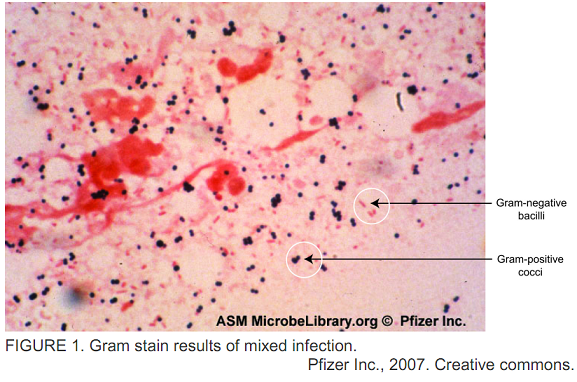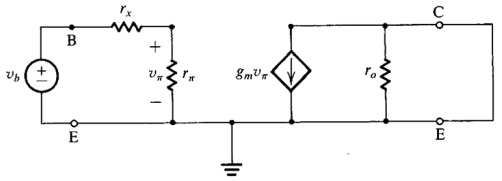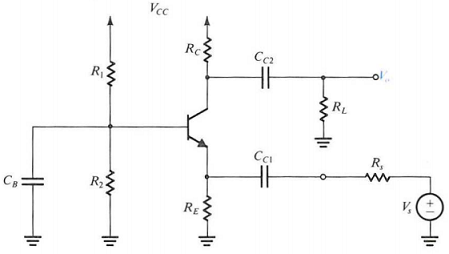Assignment -
Consider a common emitter amplifier:

Now let's say that RB and RC do a fine job at DC biasing the BJT but they are large so they can be neglected for small signal (AC) analysis. In that case, the equivalent circuit looks something like this:

Notice that I shorted collector and emitter to keep things simple for analysis below.
We usually neglect the tiny resistance at the base rx (just consider it a short) and the large resistance ro (just consider it an open circuit). But if the AC frequency gets large then the internal BJT capacitances must be taken into account:

A. As you might imagine, at some 3dB frequency this circuit will start to cut off its output. What is this frequency? Derive the answer by inspection.
B. Let's re-derive the answer via current loop analysis. Redraw the circuit replacing all components with equivalent impedances.
C. Then figure out the ratio of collector current to base current.
D. Figure out where the downturn for the magnitude of this ratio starts. Illustrate your answer with the plot of magnitude of the ratio vs frequency.
E. How would your answer change if you do not neglect rx?
Now let's play this game with a common-base amplifier:

First, let's neglect large external bias resistors (R1, R2, RC, RE) for this problem. Capacitances are infinite so they are also neglected. As far as the BJT, we again neglect rx as a short and ro as an open.
F. What will the circuit look like from the emitter? Hint: the voltage controlled current source does not change the voltage at the emitter so it and everything after it on the collector side is decoupled.
G. What will be the 3dB frequency for this part of the circuit? Explain your reasoning but you can derive the value by inspection.
H. What will the circuit look like from the collector?
I. What will be the 3dB frequency for this part of the circuit? Explain your reasoning but you can derive the value by inspection.
J. Suppose β = 100, rπ = 2500Ω, Cπ = 12pF, Cμ = 2pF, Rs = 10Ω. Compare the cutoff frequencies for common emitter and common base amplifier. Which has higher bandwidth?